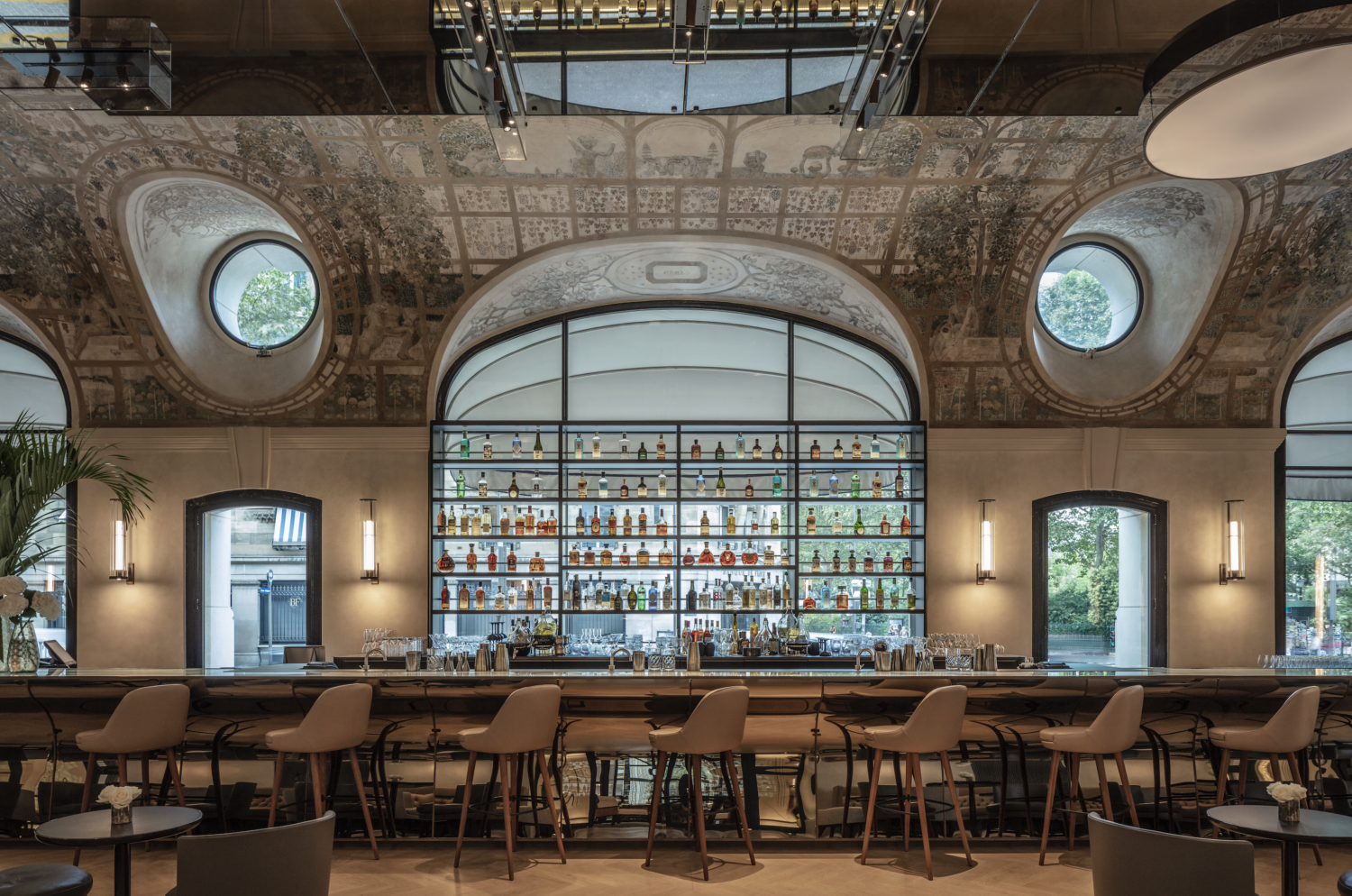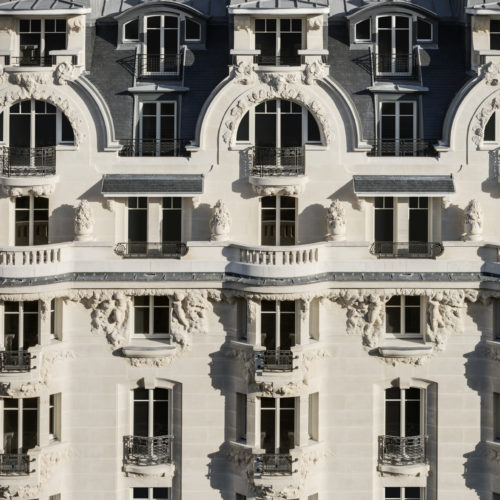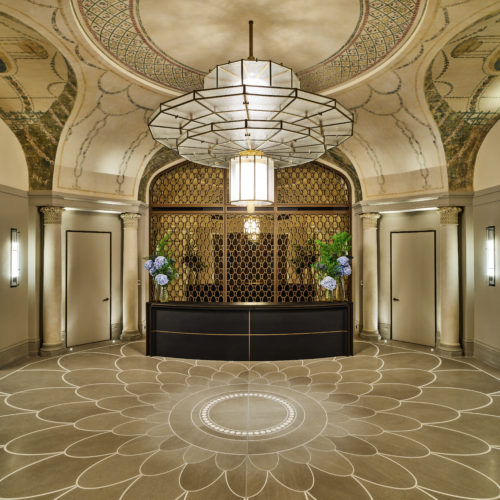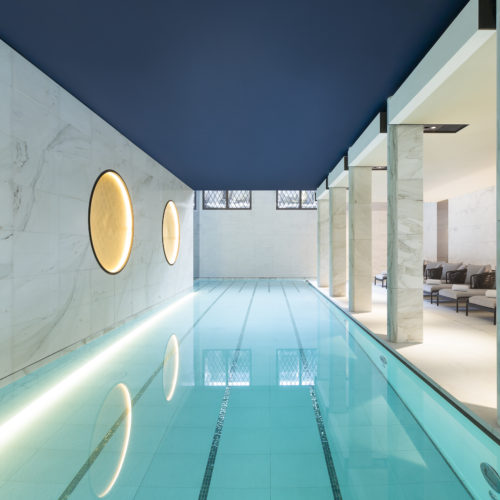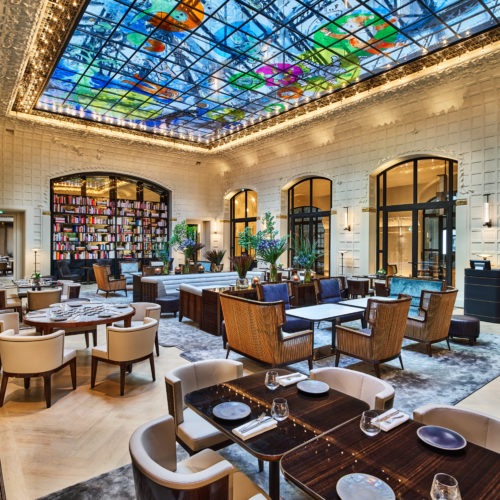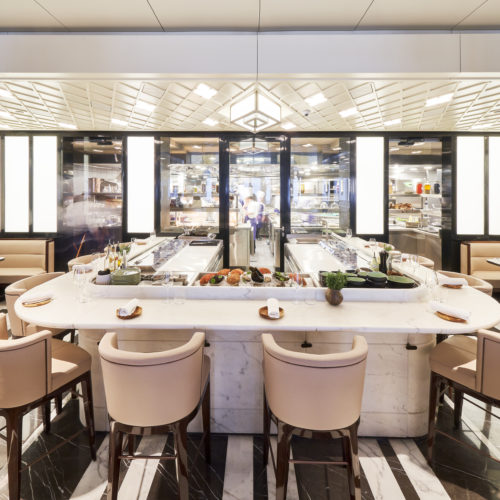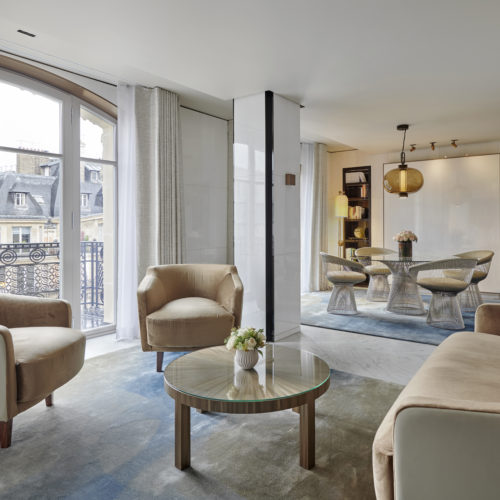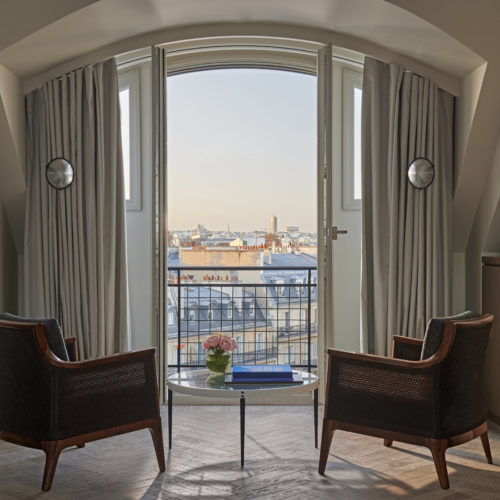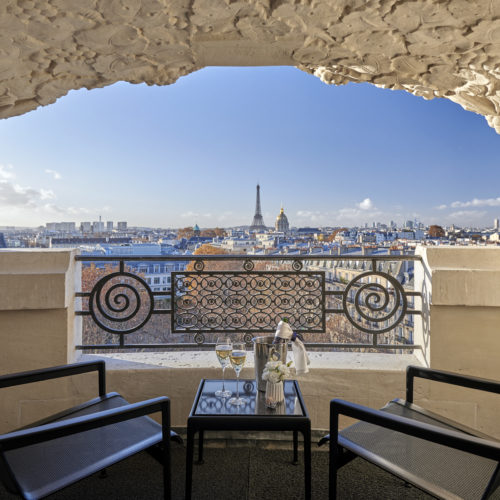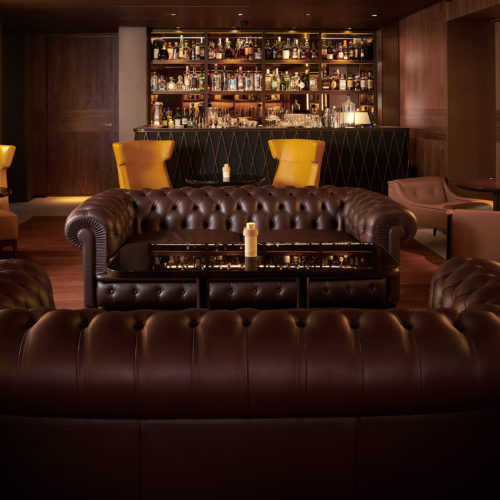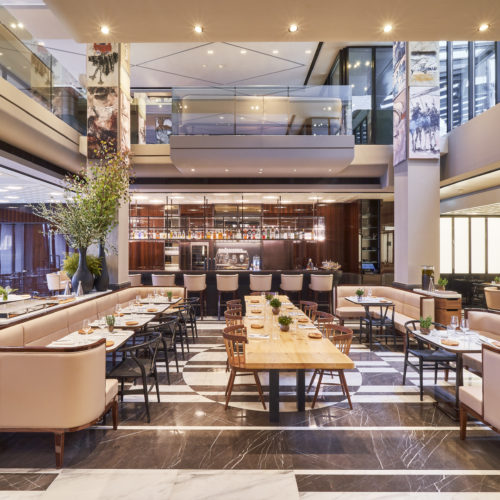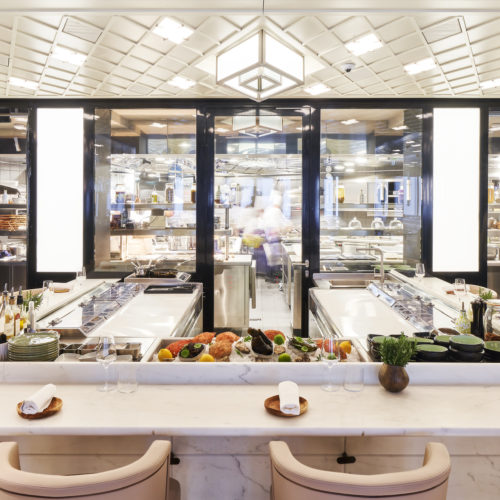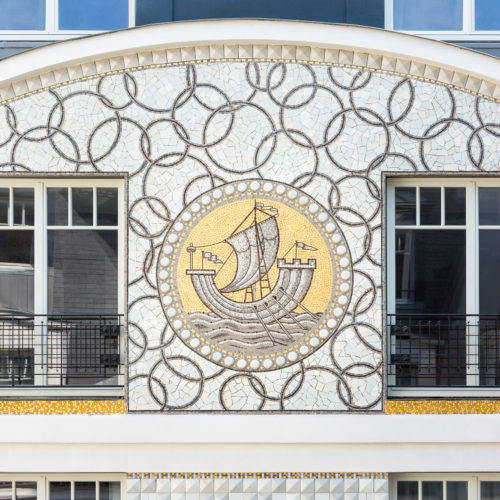Par Alexandre Arditti
It is the only palace on the Left Bank. Opened with great fanfare in 1910, the Lutetia is not a hotel like any other: its history mirrors that of the capital. A meeting point for all of Paris of culture and politics until the beginnings of World War II, it was then requisitioned – first as the headquarters of the Gestapo, then as a place of reception for the deportees and their families. – before being reborn from its ashes and becoming again, throughout the second half of the 20th century, “the place to be” of the French and international intelligentsia. After four years of extensive work, the Lutetia reopens its doors, more magnificent than ever, with that little extra soul that makes this hotel steeped in history a jewel of the national heritage.
All Parisians will tell you: the Lutetia is first of all this unique facade, which waves like a wave in the heart of Saint-Germain-des-Prés. A true UFO in terms of architecture, with its balconies, cornices and balusters adorned with little angels and bunches of grapes, the hotel is the privileged witness of the history of the 20th century, halfway between Art Nouveau and Art Deco.
A palace steeped in history
A tribute to Lutetia, the ancient Roman capital from which it takes its name, and proudly enthroned in a district traditionally frequented by artists, the Lutetia has since its creation established itself as the unmissable meeting place for Parisian intellectuals. From the 1920s and over the years, renowned personalities met there, starting with great figures of literature such as André Gide, Albert Cohen, Antoine de Saint-Exupéry, Albert Camus, Paul Morand without forgetting Jean- Paul Sartre. But the politicians are not left out since it is here that General de Gaulle spent his wedding night in 1921, here also that much later, Georges Pompidou, François Mitterrand or Jacques Chirac will have their habits. During the Second World War, like all the main places and other palaces in the capital, the hotel was requisitioned. At the end of the conflict, the Lutetia welcomed the deportees and their families who had come to find them. A plaque is now sealed on its storefront so you will never forget.
A rebirth placed under the sign of emotion
It is to the famous architect Jean-Michel Wilmotte, that returned the delicate mission of resuscitating this myth of the Parisian hotel industry by bringing it into the 21st century, while preserving the soul, the emotion and the magic of places. First project: the number of rooms was also reduced from 233 to 184, in order to create 47 magnificent suites, including 7 Signature suites, and thus comply with the new codes of the luxury hotel industry. Spacious and could not be more comfortable, room here for Art Deco furniture designed by Jean-Michel Wilmotte, in blue and greige tones, Murano glass sconces, dark parquet floors and other eucalyptus wood doors without forgetting the superb rooms white marble bathroom. Bathed in exterior light, they are also equipped with digital tablets that control the lighting and temperature in each room. On the occasion of this renovation, the flower of the arts and crafts took part in the renovation of the stained glass windows, decorative paintings, frescoes, mosaics, sculptures … “We noticed that, under dozens of layers of paint, there were frescoes of very high quality. We took them out, scratched them, and we made them reappear. It’s as if we have rediscovered a piece of the history of the building from 1910. ”marvels Jean-Michel Wilmotte. All over the hotel, a host of cozy little corners, from the open-air Art Deco patio to the ultra-cozy library, allow you to isolate yourself or change the atmosphere as you wish, without ever leave the cocoon. At the Joséphine Bar, widely open to the outside world and Parisian life thanks to large and bright bay windows, it took nearly 17,000 hours of work to restore the emblematic fresco by Adrien Karbowsky, discovered under six coats of paint and rendering homage to the garden of the Abbaye-aux-Bois, on which the Lutetia was built. But it will take much less time to taste one of the signature cocktails of the talented mixologist Nicolas Barrafarano, or why not a glass of champagne from the Lutetia cuvée specially developed by the Taittinger house.
Top-class gastronomy
Who says palace, says exceptional gastronomy. Widely frequented by Parisians and tourists from all over the world who come to spend a moment in a mythical setting so representative of the French art of living, the Lutetia puts the small dishes in the big ones so that everyone can give in to temptation under the leadership of the 3-star chef Gérald Passédat. At Saint-Germain, the old Lutetia winter garden, sheltered by a beautiful glass roof typical of Gustave Eiffel which was associated with the construction of the hotel in the early 1900s, you can taste some classics freely inspired by Asia in a resolutely friendly atmosphere. At the Brasserie, Gérald Passédat gives free rein to his imagination straight from the Mediterranean, with the added bonus discreetly installed at the back of the room the ingenious Sea Bar, where lovers of seafood cuisine will be able to have a blast. with for example the menu in seven levels, where the taste journey keeps all its promises. The opportunity to discover here a thousand and one new preparations and flavors based on Mediterranean fish and shellfish, washed down with a few southern wines, of which the sommelier has the secret. Finally the Orangery If the Lutetia is still far from revealing all its secrets to us, its Akasha Spa is not the least of its assets, in particular thanks to its spectacular swimming pool, planted in a minimalist and luminous decor, undoubtedly one of the most beautiful swimming pools. from the capital with its 17 meters. Inspired by the four elements (air, water, earth, fire) and a holistic approach to care, it offers a comprehensive range of treatments and massages from around the world using Carita, CellCosmet and Aromatherapy Associates products and protocols. Last but not least, the “Francis Ford Coppola” terrace suite, named after the famous American director who contributed to its decoration by depositing many personal items (shooting photos, cameras, etc.), awaits you on the top floor of the hotel. , with the added bonus of a large roof terrace with breathtaking views over the rooftops of the capital, where you can dine under the stars on sunny days. Finally, if the “maestro” is not already installed there since there are his habits during his frequent stays in Paris!


